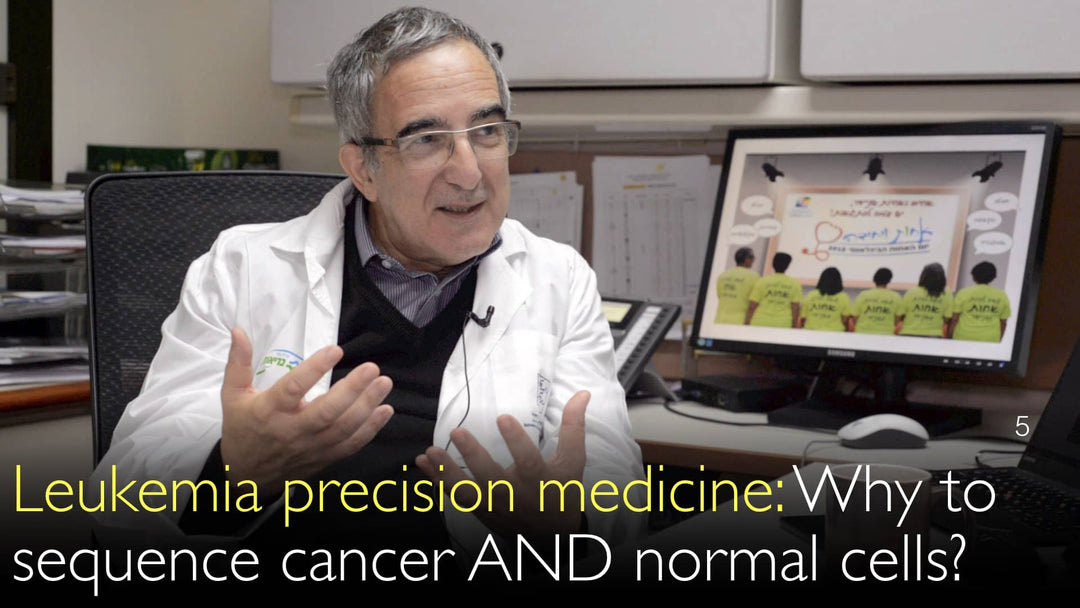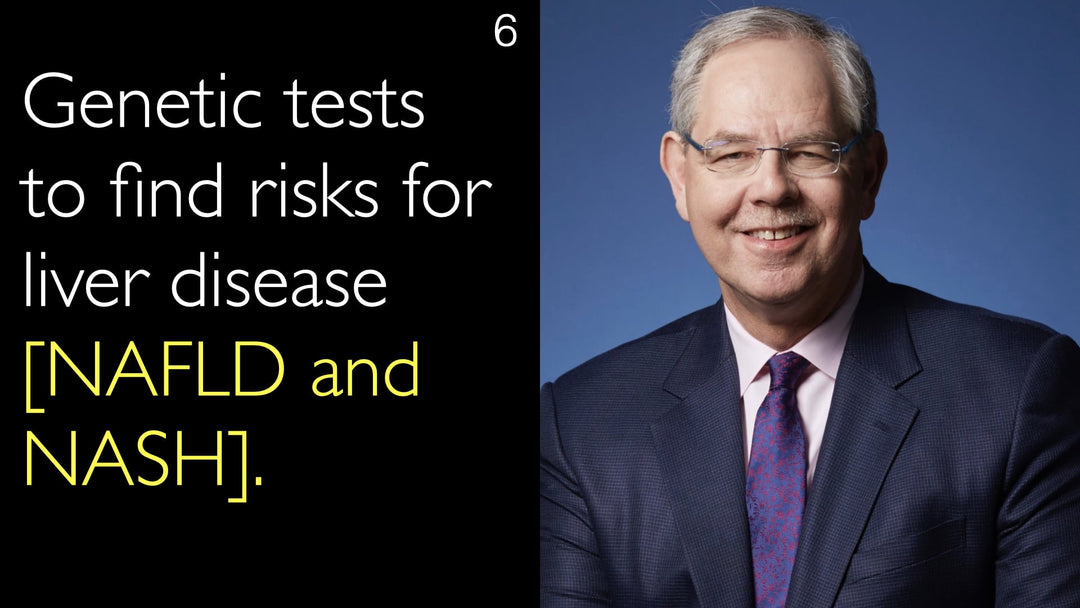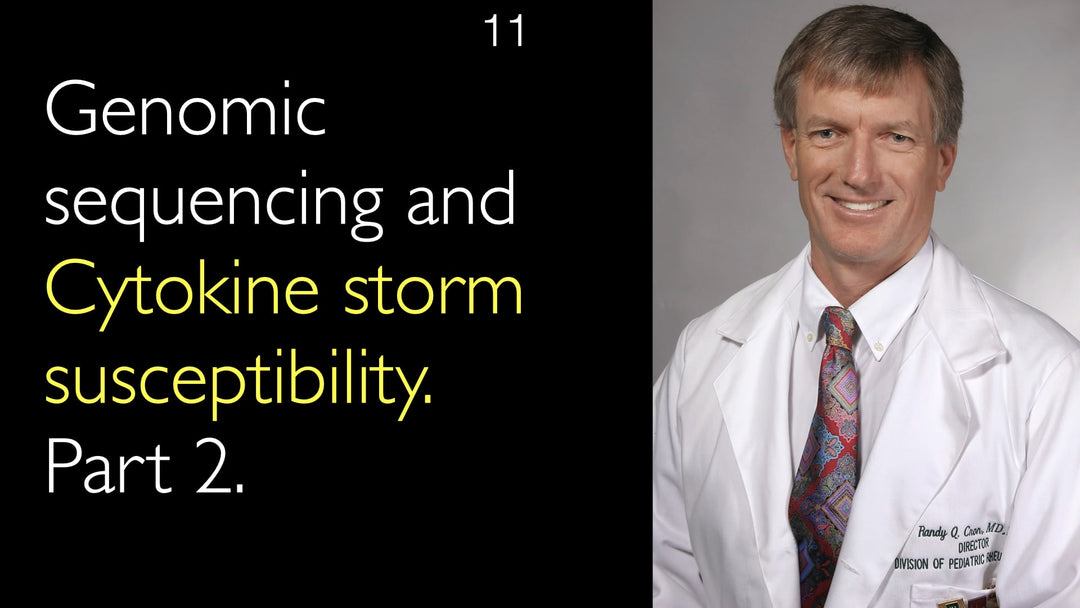Leading expert in pediatric oncology and leukemia, Dr. Shai Izraeli, MD, explains the critical importance of dual genomic sequencing in cancer diagnosis. He details how next-generation sequencing (NGS) of both cancerous cells and a patient's normal germline cells is essential for precision medicine, revealing that up to 15% of childhood cancers have a hereditary component. This approach not only guides targeted treatment but also identifies cancer-predisposing mutations that have significant implications for the patient's family.
Dual Genomic Sequencing in Leukemia: Cancer Cells and Germline Analysis
Jump To Section
- Why Sequence Both Cancer and Normal Cells
- The Substrate for Cancer Cell Sequencing
- The Rising Importance of Germline Sequencing
- How Germline Sequencing is Performed
- Clinical Implications of Hereditary Cancer Findings
- Precision Medicine in Action
Why Sequence Both Cancer and Normal Cells
Genomic sequencing, including next-generation sequencing (NGS) and whole-exome sequencing (WES), is now a standard part of oncology. Dr. Shai Izraeli, MD, emphasizes that sequencing must be performed on two distinct cell types: the cancerous tissue from a biopsy and the patient's normal cells. This dual approach is fundamental to modern precision medicine because a significant share of cancers is hereditary. The information gleaned from both sequences is critical for tailoring effective treatment and for assessing cancer risk in the patient's extended family.
The Substrate for Cancer Cell Sequencing
For leukemia patients, the substrate for cancer genomic sequencing is typically cells from a bone marrow biopsy or peripheral blood. As Dr. Shai Izraeli, MD, explains, it is crucial to sequence the leukemic cells themselves to identify the driving genetic mutations, such as the BCR-ABL abnormality found in Philadelphia chromosome-positive leukemia. These acquired mutations are specific to the cancer and are prime targets for precision therapy. Enriching the sample for these cancerous cells is a necessary step to ensure the NGS data is accurate and clinically actionable for diagnosis and treatment selection.
The Rising Importance of Germline Sequencing
Beyond the tumor, sequencing the germline is becoming increasingly vital in cancer care. Dr. Shai Izraeli, MD, points to growing evidence that genetics play a major role in both childhood and adult cancers. Research indicates that up to 15% of cancers in children have a hereditary component. This discovery is profoundly important for treatment planning, especially when considering a bone marrow transplant from a sibling donor, who might also carry the same cancer-predisposing mutation. Germline sequencing provides a complete genetic picture that is essential for patient and family safety.
How Germline Sequencing is Performed
Germline sequencing analyzes a patient's inherited DNA, which is best obtained from non-cancerous cells. In blood cancer cases, Dr. Shai Izraeli, MD, notes that a common source is a skin biopsy to culture fibroblasts. This procedure is often seamlessly integrated into the care plan for children, who frequently undergo anesthesia for the insertion of a central venous line for chemotherapy. By taking a small skin biopsy during this pain-free procedure, clinicians can secure a pristine sample of normal DNA for germline NGS analysis, ensuring a comfortable experience for the young patient.
Clinical Implications of Hereditary Cancer Findings
The discovery of a hereditary cancer syndrome through germline sequencing has immediate and far-reaching clinical implications. As detailed by Dr. Shai Izraeli, MD, this information can directly influence treatment intensity and the choice of a stem cell donor, preventing the use of a sibling who also carries a high-risk mutation. Furthermore, identifying a cancer-predisposing mutation allows for genetic counseling and testing of extended family members. This proactive approach enables early detection and preventive strategies for relatives who may be at risk, fundamentally changing the health trajectory of an entire family.
Precision Medicine in Action
The practice of sequencing both cancerous and normal tissues is a true embodiment of precision medicine. Dr. Shai Izraeli, MD, describes this dual approach as a powerful tool that has led to incredible cures, including recent successes at his center. By comprehensively analyzing the entire genetic landscape—both the acquired mutations in leukemia cells and the inherited mutations in germline DNA—oncologists can deliver highly personalized and effective care. This strategy ensures that treatment is not only targeted against the cancer but is also safe and informed by the patient's complete genetic heritage.
Full Transcript
Genomic sequencing (NGS, WES) of tumors is now common. But why do you need to sequence both cancer tissue from biopsy or tumor resection and normal patient’s cells (often from skin cells, fibroblasts)? A significant share of cancers is hereditary. NGS information may have significance for treatment and for others in the extended family.
Dr. Anton Titov, MD: You do genomic next generation sequencing (NGS) of child leukemia cells. What is the substrate for the sequencing? Is it peripheral blood cells? Is it the bone marrow biopsy?
Dr. Shai Izraeli, MD: This is a complicated question that I will divide into two parts. I gave you an example for Philadelphia-like or Philadelphia leukemias with BCR-ABL abnormalities. These genetic mutations (chromosomal translocations) are found in leukemic cells. It's very important to sequence the cancer cells itself.
Dr. Anton Titov, MD: Do you have to enrich cells for next generation sequencing (NGS) of cancer?
Dr. Shai Izraeli, MD: Yes. I may give later an incredible example of child cancer cure that we had in our center recently. That cure shows you also the importance of tumor gene sequencing.
Something else is also becoming more and more important. We learn that genetics is more and more important for tumors in childhood and in adult cancer.
We think that up to 15% of cancers in children have a hereditary component. This is important! Because you may need to give to cancer patient a bone marrow transplant from a brother or sister. But they might also have a cancer-predisposing mutation.
More and more we now also sequence the germline. Germline means not the leukemia cells itself. In blood cancer we often sequence the cell from a skin. We sequence a skin cell from a fibroblast culture of the skin.
It's very common to get skin biopsies for children. Because we insert central venous lines for treatment of cancer in children. Central venous lines are done under anesthesia. We believe that this is a pain-free hospital; we do everything under anesthesia. Then we also take a skin biopsy.
More and more we do germline sequencing from skin. We discover hereditary cancers in a family. We sequence both tissues. We do sequencing of cancer leukemic cells from bone marrow. We also sequence normal cells from the germline. They usually come from skin fibroblasts.
Dr. Anton Titov, MD: These are true examples of precision medicine! Yes.







